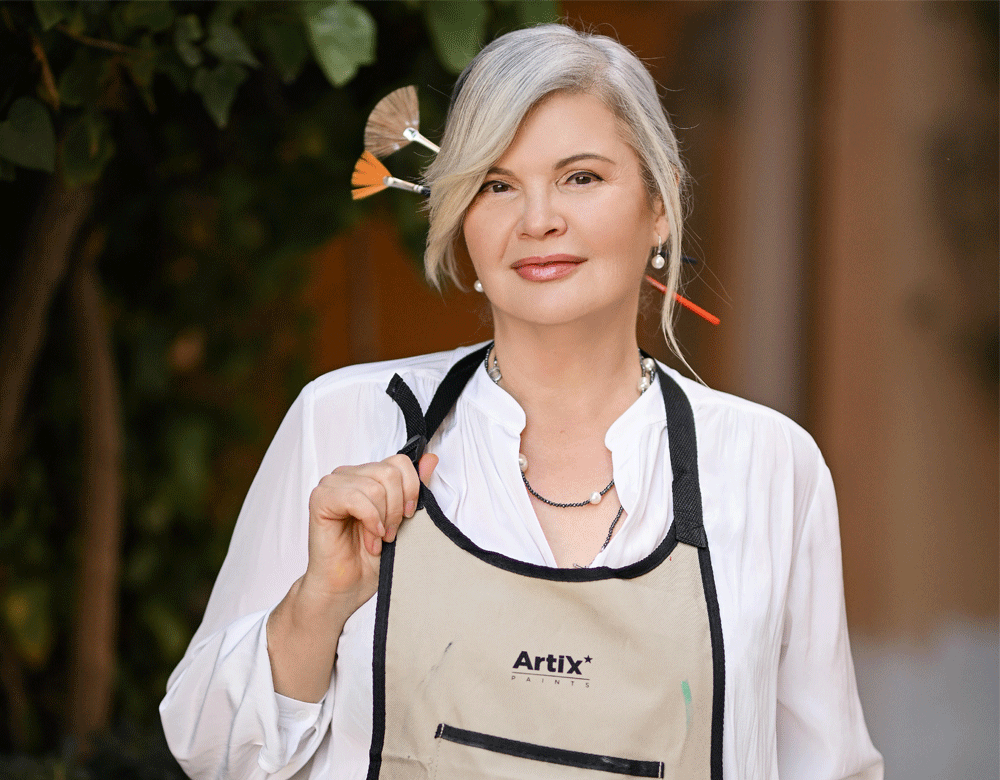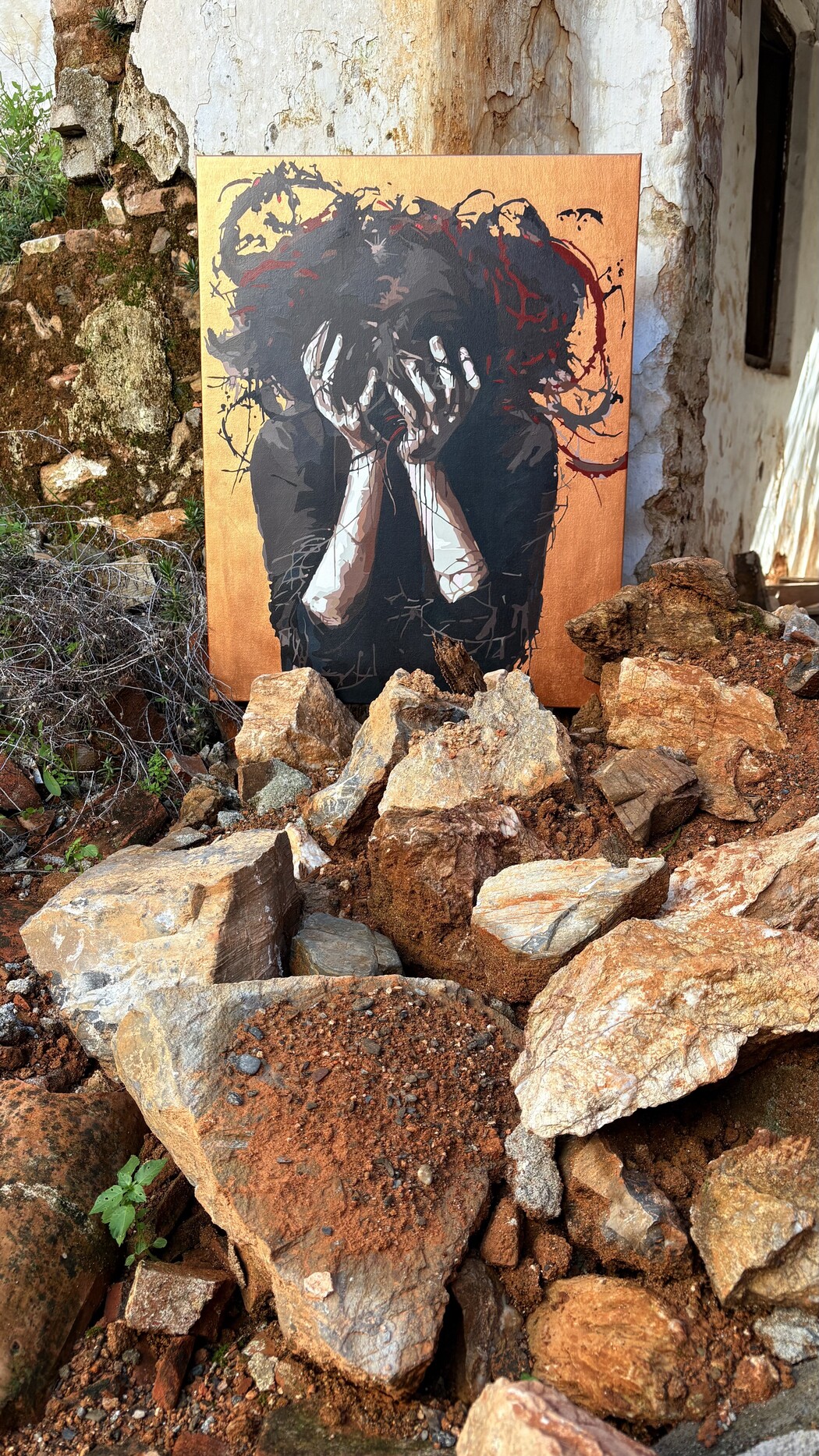Alisa Chernova Art

Your work blends psychology and art. How has your background in medicine and Gestalt therapy influenced your approach to painting?
My artistic thinking grew at the intersection of body and soul. Medicine taught me to see the human being not only from the outside but through vulnerability — to read pain as a metaphor for inner conflict. Gestalt therapy, in turn, gave me the language for that conflict: a language of images, sensations, and unfinished stories.
When I paint, it’s as if I’m peeling away emotional layers from the canvas — like listening to a patient, but instead of words, there are textures, shadows, lines. My paintings are not diagnoses — they are acknowledgements: “I see you, even if you don’t fully understand yourself yet.”
Your paintings “Anxiety” and “Despair” are part of a series inspired by Freud’s theories. Why Freud? And how does his work inspire your creative search?
Freud isn’t just psychoanalysis — he’s the courage to look where we usually avert our eyes: into what’s repressed, painful, invisible.
I’ve always been drawn to hidden impulses, suppressed emotions, the internal conflict between who we are and who we’re supposed to be. The series “In the Company of Sigmund Freud” is a visual dive into the unconscious, where anxiety, despair, and isolation are not demons but shadows of the self. I don’t want to silence them — I want to give them voice.
For me, the canvas becomes a space of free association, where every brushstroke feels like a Freudian slip.
 Alisa Chernova Art | Despair
Alisa Chernova Art | Despair
What role does color psychology play in your creative process? Can you share how certain colors are chosen to reflect emotional states?
Color is never just an aesthetic decision — it’s an emotional code. It speaks before the subject does, and often louder than the form.
When I choose a color, I don’t ask, “What looks beautiful?” I ask, “What does this emotion feel like?”
For example, my depiction of anxiety isn’t the traditional blue — it’s a muted greenish-grey with rust undertones, like something that scrapes from within. Despair, for me, is a deep, dried-blood burgundy — clotted, heavy, like an old wound.
I work with my palette as if it’s a therapeutic tool: until the color matches the emotion, the painting doesn’t breathe.
Many of your works visualize inner struggle and emotional pain. How do you reconcile artistic expression with a therapeutic intention?
I don’t set out to “heal” the viewer. But I do hope they feel seen — in their fear, in their brokenness, in their complexity.
When we recognize our own shadow, it loses some of its power. Art can be a mirror or a window. Often, it’s both.
My paintings are invitations to an inner dialogue. If that dialogue begins — then perhaps that is already a kind of therapy.
 Alisa Chernova Art | Anxiety
Alisa Chernova Art | Anxiety
You often portray intense feelings like fear, hopelessness, or internal conflict. Is the act of creating these works also a form of personal healing for you?
Absolutely. I never paint just because something looks “interesting.” Every work reflects an emotional state I’ve lived — or am still living through.
The canvas becomes a safe space to speak without words. A place where I can be fragile, angry, silent, lost.
Sometimes, when I finish a painting, I realize something inside me has shifted — like after a deep therapy session. Except here, the therapist is color and texture.
What does your daily artistic practice look like, and how do you integrate therapy or psychological insight into your creative process?
I don’t follow a rigid routine. There are long periods of thinking, reading, absorbing… and then one night when everything pours out at once.
I often borrow techniques from Gestalt — working with bodily sensations, inner images, spontaneous associations. Sometimes I begin with the question: “Where does it hurt?” and instead of answering in words, I answer with brushstrokes.
Each painting is like a case study. But the “client” is a hidden part of myself.
Your artworks are often presented in raw, natural environments — among rocks, ruins, and landscapes. Why do you choose these spaces to showcase your work?
Nature is my silent co-creator. I photograph my finished pieces against mountains, cliffs, or ruins — not for decoration, but for resonance.
Cliffs that have endured centuries of wind, burning sun, and crashing waves symbolize inner strength and resilience. I want my emotionally intense works to lean on that backdrop — so the viewer can feel: yes, there is pain, but also the possibility to endure.
But sometimes, the landscape must reflect collapse. I photographed the painting “Despair” in the ruins of an old house. Because despair is not just pain — it’s the collapse of hope, of will, of belief itself. It needed a setting where even the walls were broken.
I don’t place my art in nature — I let it merge with it. The background becomes part of the message. And sometimes, wind, silence, and stone are the best curators.

Leave a Reply